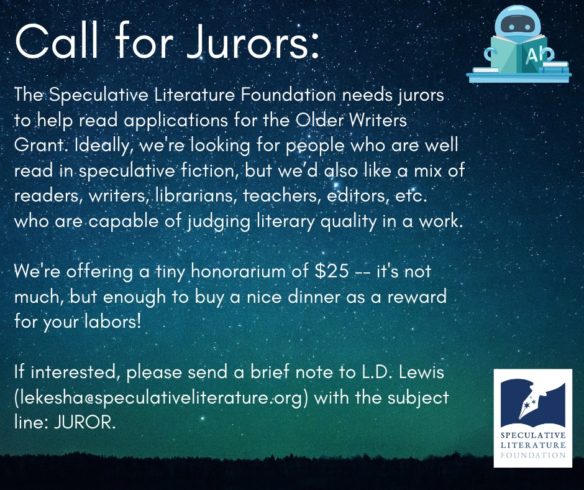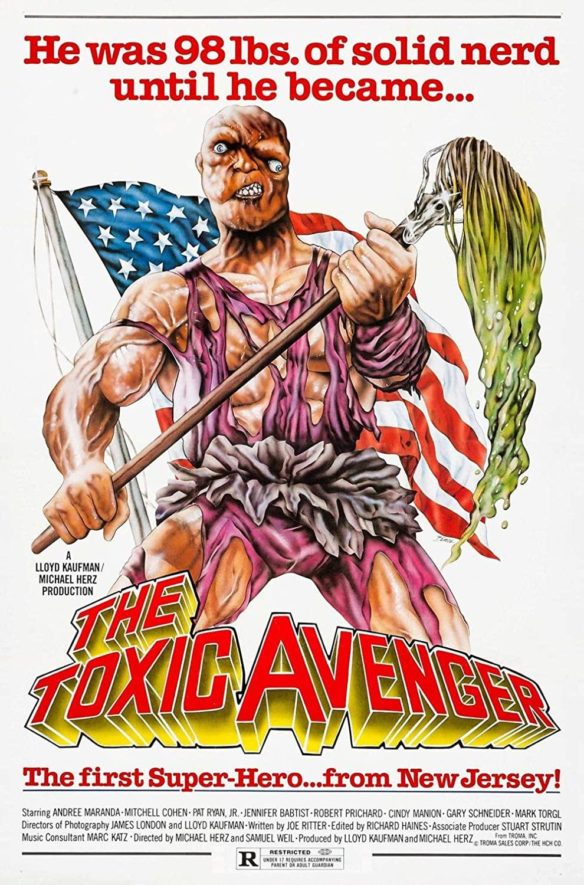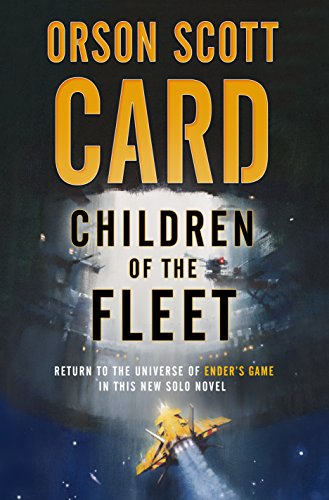(1) JOCO VIRTUAL CRUISE IN PROGRESS. [Item by Todd Mason.] The Jonathan Coulton Cruise, an annual “fringe”/”geek” cultural floating convention, is this year providing a free online version of the (essentially) convention… “JoCo Virtual Cruise 2021”. It started April 10 and runs through April 14.

A worldwide pandemic may have prevented the physical sailing of JoCo Cruise 2021 from happening, but the spirit of JoCo Cruise SHALL NOT BE DENIED OR CONTAINED. As such, we at The Home Office have uploaded our collective consciousness to the cloud, and JoCo Cruise is going to ride the ones and zeros as JoCo Virtual Cruise 2021.
Concerts, panels, gaming, Shadow Cruise (attendee-run) events, dance parties, a Fancy Pants Parade—all the things you love about JoCo Cruise, packed together and streamed over the Netterwebs for your socially-distanced convenience!
(2) HOOFING THROUGH HISTORY. Jason W. Ellis has posted “Notes on A Science Fiction Walking Tour in New York City”.
Looking ahead to the New York City of Print NEH Summer Institute, I wanted to collect some notes and resources together for Science-Fiction-focused locations around the city, including the original Manhattan-based offices for the magazines Amazing Stories and Astounding Science-Fiction, and home and business locations in Brooklyn of importance to the SF writer Isaac Asimov….
(3) HATE CRIMES IN CAMBRIDGE. [Item by rcade.] The SFF writer/editor Cecilia Tan tweeted Saturday evening that she had just witnessed an assault outside a Cambridge, Massachusetts, bookstore. Thread starts here.
I’m in line to enter the bookstore and there is an Asian American couple in front of me. A white guy in tights wearing a mask goes to walk between us and he just outright punches the Asian guy in the ribs as he goes by!
The Asian guy grabbed his arm and yelled what the hell is wrong with you? The white guy pulled away yelling “what the hell you think is wrong with me?” And then walked away quickly before I could get my phone out to take a photo.
The incident occurred outside Porter Square Books. Tan said the store has security cameras it will be checking for potential footage to provide police.
Tan was walking home from the bookstore when she encountered another hate crime in Porter Square. The Judy Jetson hair salon had a boarded-up window with the words, “You can break our window but you can’t break our Pride.”
The salon’s Instagram feed revealed Friday that someone threw a brick through a window displaying a Pride flag. The salon stated, “Our support for the LGBTQ community will never be silenced.”
(4) HELPING VARLEY. A new post at John Varley’s blog, “Recovering”, announces a GoFundMe to sustain him after his quadruple bypass:
… When I had the heart attack and quadruple by-pass surgery, Spider [Robinson] came to the rescue again. He asked his good friend, Steph Herman, to co-ordinate a fundraising project to help cover costs of rehab, rent and bills which were barely being covered by social security and diminishing royalties.
The “Help John Varley survive his Quadruple Bypass” appeal has raised $27,020 of its $30,000 goal in the first week. When the fund hit the $25K mark Varley and his partner Lee Emmett wrote:
…If he had raised a tenth that much I would still have been stunned. There have been some donations from old friends (and thank you all for that; you know who you are), but the bulk has come from people I don’t know, have never met, and probably will never meet. (Though I would love to.)
To think that my stories have moved so many people … well, it literally chokes me up. After all, I’m just a guy sitting here in the dark, trying to think up stuff that might amuse people … and perhaps a little more if I’m lucky and it all comes together. Being a writer of short stories and novels is a lonely profession. There are no story conferences, no meetings in the writers’ room to hash out the details. There’s just me and this damn blank screen.
Over the years I have had a certain amount of “fan” mail, and it has all been greatly appreciated. But nothing like this. In the end, all I can say is thank you….
(5) DIGNITY, ALWAYS DIGNITY. In his autobiography In Joy Still Felt, Isaac Asimov discussed Discon I (1963). He explained that at the last-minute chair George Scithers asked him to replace Theodore Sturgeon as master of ceremonies at the Hugo Awards, also at the last minute. Asimov explains that he really wanted a Hugo and thought being MC meant he wouldn’t get one.
Finally, there was only one Hugo left to be awarded, and it was labeled ‘Dramatic Award.’ I didn’t think anyone would be interested in that because it would be go to some movie or TV show with no one involved who was personally known to anybody, so I let the audience wait while I launched into a short speech of not-so-mock annoyance.
‘You know why I’ve never had a Hugo?’ I said, waving my fist in the air. ‘It’s because I’m Jewish, that’s why. It’s because of anti-Semitic prejudice in high places, It’s because you’re all a bunch of Nazis.’ Naturally, this got a big laugh, and I opened the envelope and found that the ‘Dramatic Award’ typed on it had been put there as a blind.
The final Hugo, of course was for me. I started reading, ‘For putting the science in science fiction, Is—‘ and stopped cold.
There wasn’t any question I was surprised. The day never existed when I could fake that look of stunned astonishment on my face, The audience roared; it roared for ten minutes. When everyone died down and I caught my breath, George handed me my Hugo and I said, ‘You’ve ruined my shtick, damn it.’ (I tried to feign indignation, but I was smiling all over. I was delighted.)
Apparently Ted Sturgeon had been chosen master of ceremonies because they wanted to give me a Hugo, and apparently he had been kept away by family difficulties.
I said, ‘Then why did you ask me to be master of ceremonies, George? There were plenty of other choices.’
‘Oh well,’ said George, ‘we thought it would be funnier that way, but I have to admit no one ever dreamed you would lead up to it so beautifully.’
I said, ‘Don’t you think it would look peculiar to have me give a Hugo to myself?’
‘Sure,’ said George, ‘but the committee decided you were the only writer in science fiction who could give himself a Hugo without being embarrassed,’
“Wiseguy,’ I said–but he was probably right.
(6) MASLOW’S FOUNDATION. Horror Writers Association members have been passing around the link to “Maslow’s pyramid of code review” (2015) since it was tweeted by Space & Time’s Leonard Speiser. Originally aimed at writers of computer code, Angela Yuriko Smith’s reinterpretation for fiction authors is here: “Maslow’s Pyramid Of Code—Writer Mod”.
…The layers are correct, secure, readable, elegant with the pinnacle of accomplishment as altruist. I have printed this pyramid and have pinned it to my wall so I can evaluate my own manuscripts with it. It’s beautiful, simple and it makes sense. You can see Dein’s original post referring to Maslow’s Pyramid of code here. Here’s my modified version for writers and poets:
Any piece of writing should be:
- Correct: does the written work do what it’s supposed to? Has it been edited and formatted? Have the redundancies been weeded out? Is it as correct as possible? Have run on sentences and passive voice been eradicated?
- Secure: does the written work have vulnerabilities? Is it stored in the cloud, or backed up on your computer? Do you need a hard copy? Do you save on an external drive?
- Readable: is the written work easy to read and comprehend? Are there plot holes and lapses in logic? Does the dialogue feel natural? Is the world believable? Can the reader follow along and understand what you wish to communicate?
- Elegant: does the written work leverage well-known patterns? Does it make use of balanced syntax? Is there texture, rhythm and a variety of adjectives? Does the piece flow, bringing the reader along for the ride or must they struggle to stay afloat in the text? Is there a compelling start and satisfying end?
- Altruist: does the written work leave the humanities better than what they were? Does it inspire other writers to improve their work as well? Is it cleaning up unneeded bias, improving diversity, introducing better writing through worn out trope refactoring? Does it have a purpose beyond ego, whether this is to teach, enlighten or entertain?
(7) SLF NEEDS JURORS. The Speculative Literature Foundation is calling for volunteer jurors to help read applications for the Older Writers Grant.
Ideally, we’re looking for people who are well read in speculative fiction, but we’d also like a mix of readers, writers, librarians, teachers, editors, etc. who are capable of judging literary quality in a work.
Please include the grant you wish to be a juror for and a paragraph about what your qualifying background is to serve as a juror: for example, your interest in / connection to the field. (i.e., “I’m an ardent reader!” or “I’ve been writing SF/F for seven years…”). Please feel free to ask any questions you may have as well.
Finally, we’re offering a tiny honorarium of $25 — it’s not much, but enough to buy a nice dinner as a reward for your labors!
If interested, please send a brief note to L.D. Lewis ([email protected]) with the subject line: JUROR.

(8) MEDIA BIRTHDAY.
- April 11, 1986 –On this day in 1986, The Toxic Avenger was released nationally two years after it premiered in New York City. It directed by Michael Herz and Lloyd Kaufman (who is credited here as Samuel Weil) as written by Kaufman and Joe Ritter. It was the first installment of The Toxic Avenger franchise which would encompass three more films, a Marvel Comics series and a short lived children’s animated series. Mitch Kessler was the Toxic Avenger with his voice provided by Kenneth Kessler. Critics at the time ranged in their opinions from disgusted to delighted with the mainstream ones decidedly not liking it; it currently holds an excellent approval rating of sixty three percent among audience reviewers at Rotten Tomatoes. Kaufman and Herz are currently attached to a reboot with Peter Dinklage in the lead role.

(9) TODAY’S BIRTHDAYS.
[Compiled by Cat Eldridge and John Hertz.]
- Born April 11, 1883 – Camille Marbo. Won the Prix Femina, later served on its jury, then its president. Commander of the Legion of Honor. Medal of French Gratitude for war work. With her husband mathematician Émile Borel, founded La revue du mois (“Review of the month”), scientific & literary. Friend of Marie Curie. Three times president of the Société des gens de lettres. Of her forty books, novels, monographs, memoirs, I know of only one translated into English, The Man Who Survived; it is ours and a masterwork. (Died 1969) [JH]
- Born April 11, 1892 – William Timlin. The Ship That Sailed to Mars (hello, David Levine) really does have to be enough for us, because WT never finished The Building of a Fairy City. Luckily The Ship is superb. You can get it on paper if you look hard – even the 1977 Easton Press ed’n is plenty rare – but quick and cheap for Kindle in English, Spanish, Japanese. The Wayback Machine’s has a hint of WT’s calligraphy. Here is the ship’s arrival. Here is the finished palace of the princess. Here is another moment. This is from The Building. (Died 1943) [JH]
- Born April 11, 1920 — Peter O’Donnell. Best remembered as the creator of Modesty Blaise of whom EoSF says her “agility and supple strength are sufficiently exceptional for her to be understood as a Superhero.” O’Donnell also wrote the screenplay of The Vengeance of She based on H. Rider Haggard’s Ayesha: The Return of She novel. (Died 2010.) (CE)
- Born April 11, 1941 – Gene Szafran. Fourscore covers. Here is Double Star. Here is Down in the Black Gang. Here is To Ride Pegasus. Here is Bridge of Ashes. Here is Beyond the Beyond. (Died 2011) [JH]
- Born April 11, 1949 — Melanie Tem. She was the wife of genre author Steve Rasnic Tem. A prolific writer of both novels and short stories, she considered herself a dark fantasy writer, not a horror writer. Bryant, King and Simmonds all praised her writing. If I had to make recommends, I’d say start with Blood Moon, Witch-Light (co-written with Nancy Holder) and Daughters done with her husband. ”The Man on the Ceiling” won her a World Fantasy Award. She died of cancer which recurred after she’d been in remission. (Died 2015.) (CE)
- Born April 11, 1953 — Byron Preiss. Writer, editor and publisher. He founded and served as president of Byron Preiss Visual Publications, and later of ibooks Inc. If I remember correctly, ibooks was the last publisher for Zelazny for most of his books. Any idea what happened to those rights after ibooks went into receivership? The only book I can find him writing is the children’s novel Dragonworld which is co-authored with Michael Reaves who was involved in including Gargoyles and Batman: The Animated Series. (Died 2005.) (CE)
- Born April 11, 1951 – James Patrick Kelly, age 70. Five novels, a hundred shorter stories, a dozen poems. Two Hugos, one Nebula. “On the Net” in Asimov’s, and for twenty years a story there every June. Interviewed in Clarkesworld, Lightspeed, Strange Horizons. His Website says “I’ve left some things for you here. Take whatever you want. Remember me.” [JH]
- Born April 11, 1955 — Julie Czerneda, 66. She won the Prix Aurora Award for her Company of Others novel. She also received one for Short Form in English for her “Left Foot on A Blind Man” Story, both early in her career. She has a long running series, The Clan Chronicles which is as sprawling as anything Martin conceived. (CE)
- Born April 11, 1957 – Marina Fitch, age 64. Three novels (alas, Let Us Prey is lost in the German Laßt uns jagen), a dozen shorter stories. Loves rubber-stamp art, bicycling, Celtic harp & harmonica duets with her husband. [JH]
- Born April 11, 1963 — Greg Keyes, 58. Best known for The Age of Unreason tetralogy, a steampunk and magical affair featuring Benjamin Franklin and Isaac Newton. He also wrote The Psi Corps Trilogy and has done a lot of other media tie-in fiction including Pacific Rim, Star Wars, Planet of The Apes, Independence Day and Pacific Rim. His Age of Unreason series (Newton’s Cannon, A Calculus of Angels, Empire of Unreason and The Shadows of God) was nominated for a Sidewise Award. (CE)
- Born April 11, 1973 – Jon Evans, age 48. Two novels for us (Arthur Ellis Award, Foreword Book of the Year), four others; travel to a hundred countries; software engineering. Writes for The Times of India, The Globe and Mail, The Walrus, TechCrunch. Founding director of the GitHub Archive Program. [JH]
- Born April 11, 1974 — Tricia Helfer, 47. She is best known for playing the Cylon model Number Six the rebooted Battlestar Galactica series and voicing Sarah Kerrigan in StarCraft II gaming franchise. She played Charlotte Richards aka the Goddess of All Creation on Lucifer. She also voiced Boodikka in Green Lantern: First Flight, and had one-offs in Supernatural, Warehouse 13, the unsold 17th Precinct pilot, a recurring voice role in The Spectacular Spider-Man, Chuck, Human Target, Tron: Uprising, The Librarians and apparently played Dracula once in Van Helsing. (CE)
(10) COMICS SECTION.
- Get Fuzzy plays with movie titles in what Daniel Dern assures is “fan-type-humor.” It would certainly fit in here.
- “Off the Mark” shows what the term “superspreader” brings to the Mark Parisi’s mind.
(11) ALL ABOARD. Now that there will be an in-person Worldcon this year, there will be a Traincon from Chicago to the Worldcon and back announced “Conductor” Bill Thomasson. A Traincon 6 Facebook group is hosting discussions and providing an alternative source of updates.
DisCon III will take place in Washington, DC, from Wednesday, December 15, through Sunday, December 19. This news is very recent and I won’t be looking at the details of Traincon organization until after Amtrak resumes regular service next month, but I wanted to give you a heads up. My tentative plan, if the timing works, is to maximize the rail experience by taking the Cardinal in one direction and the Capitol Limited in the other. I am also contemplating the possibility of giving us a full free day in DC to check out all the wonderful tourist attractions in that city (or to assist the con with load-in/load-out if that is your thing). I would be interested in hearing whether you would prefer that free day before or after the con.
As usual, the group ticket discount will depend on how many people sign up, but I don’t yet know the details of how Amtrak will be handling group reservations in 2021. Meanwhile, I’m looking forward to a really great trip and to a great Worldcon. Hope to see
you there!
(12) SHE BITES. BoingBoing has scoured the internet for these examples of “The Profound Eldritch Horror Of Dolly Parton’s ‘Jolene’”.
There are apparently a bunch of different, totally unconnected people who have made their own Lovecraftian versions of “Jolene.”
(13) SERCON. [Item by Martin Morse Wooster.] Time to say something about Perry Middlemiss’ zine The Alien Review which showed up on eFanzines last week. It’s a new zine edited by Perry Middlemiss that…wait for it…DISCUSSES AND REVIEWS SCIENCE FICTION. Is that legal?
The first issue has reviews (Piranesi, The Ministry For The Future, a batch of 2020 novellas, and sff award winners from 2019) along with other pieces, including a reprint of a Leigh Edmonds article from 1971.
(14) DOGWHISTLE. Dammit, these books won’t slate themselves. Three-time Dragon Award finalist Declan Finn tries to fire up his colleagues in “Enter: the Dragons”.
Last year for the Dragon awards, many people in my circles hated the finalists.
And trust me, I mean it when I say that they hated the finalists. There was one caveat to that, but that’s all I recall.
My response was simple
“DUH! Why do you think I try to have this discussion EVERY MONTH FOR HALF THE YEAR? YOU THINK I LIKE THIS? IF I WANTED IT FOR MYSELF, I’D ONLY TALK ABOUT MYSELF.” [Insert sound of hair pulling and rage]
Ahem.
(15) YOU SPIN ME ROUND. Smithsonian says get your Ingenuity merch now! Mars Ingenuity Collection.
Celebrate the Ingenuity helicopter making history as the first powered flight on another planet — Mars!
(16) KEEPING AN EYE ON THINGS. In the Washington Post, Christian Davenport notes how companies such as SpaceX and OneWeb are flooding space with satellites “no bigger than a shoe box” and how these small satellites are improving communications and aiding the reporting on climate change. “Satellites becoming smaller, less expensive in revolution of space business”.
The avalanche was a stunning disaster, 247 million cubic feet of glacial ice and snow hurtling down the Tibetan mountain range at 185 mph. Nine people and scores of animals were killed in an event that startled scientists around the world.
As they researched why the avalanche occurred with such force, a team of researchers studying climate change pored over images taken in the days and weeks before and saw ominous cracks had begun to form in the ice and snow. Then, scanning photos of a nearby glacier, they noticed similar crevasses forming, touching off a scramble to warn local authorities that it was also about to come crashing down.The images of the glaciers in 2016 came from a constellation of satellites no bigger than a shoe box, in orbit 280 miles up. Operated by San Francisco-based company Planet, the satellites, called Doves, weigh just over 10 pounds each and fly in “flocks” that today include 175 satellites. If one fails, the company replaces it, and as better batteries, solar arrays and cameras become available, the company updates its satellites the way Apple unveils a new iPhone….
(17) YOU ARE VERY QUALIFIED. Mind Matters introduces another DUST short in “Sci-fi Saturday: When “The Workplace” Is Anything But”.
This sci-fi short will appeal to many who have had a job at the corner of Rat and Race and sense that’s a blessing compared to the alternative. It starts with a woman reassuring herself, “I AM the boss,” and cuts to her interviewing a job candidate who seems off-putting at first but appears qualified — and then things get weird.
Don’t miss the scene where the new employee is shown around the office as if he had spent all his life in the wilderness and had never been in a conventional 21st century office before. And then the awful truth begins to dawn…
(18) VIDEO OF THE DAY. “Star Trek Spinoff” on Saturday Night Live explains what happens when cadets from “small, exclusive Starfleet Academy” show up on the bridge during a crisis.
[Thanks to rcade, John King Tarpinian, Todd Mason, Daniel Dern, Rob Thornton, Martin Morse Wooster, JJ, Cat Eldridge, Michael Toman, John Hertz, Andrew Porter, and Mike Kennedy for some of these stories. Title credit belongs to File 770 contributing editor of the day rcade.]






